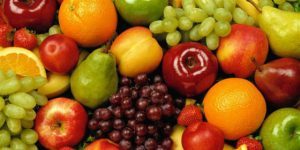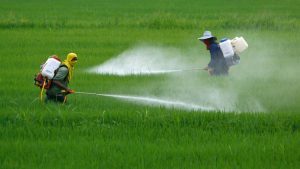Humanity’s ability to feed itself, despite population growth in recent decades, is largely due to advances in agricultural technology, especially the use of artificial fertilizers and pesticides. These chemical compounds or microorganisms protect plants against diseases such as fungi and pests, but can be harmful to health, which is why it is essential to remove pesticides from food.
An effective way to remove remaining pesticides is by washing the food with baking soda or vinegar, as the acidity of these products helps. Another way to clean fruits and vegetables is by peeling them completely, although this is not always possible. This and other mechanical methods like washing under running water, as the pressure effectively removes residues.
Furthermore, if washing with running water is combined with a soft brush and drying with a clean cloth, it further ensures that the food is free of pesticides. However, it is important to note that no method can eliminate 100% of pesticides, but it does help reduce their concentrations to minimal levels that pose no health risks.
 Apples and grapes are among the foods with the most pesticides on their surface.
Apples and grapes are among the foods with the most pesticides on their surface.
Which foods have the most pesticides?
According to the U.S. ecological organization called Environmental Working Group (EWG), these are some of the plant foods most contaminated by pesticides, many of which are banned by the European Union. This year’s list includes:
- Strawberries
- Spinach
- Kale and mustard greens
- Grapes
- Peaches
- Pears
- Nectarines
- Apples
- Peppers
- Cherries
- Blueberries
- Green beans
The Spanish Agency for Food Safety and Nutrition, on the other hand, published in 2019 an analysis with the 10 foods with the most pesticide residues such as:
- Strawberries
- Apple
- Lettuce
- Tomato
- Peach
- Table grape
- Mandarin
- Orange
- Pear
- Lemon
 The use of pesticides aims to protect crops.
The use of pesticides aims to protect crops.
The use of pesticides in crops
The reason for using these chemicals is to care for crops, as it is estimated that without their implementation, 78% of fruit production, 54% of vegetable production, and 32% of cereals would be lost. However, the negative effects of pesticides are not only for human health, especially for farmers who are more exposed, but also for the environment and other species, such as bees.
According to the report from the European Environment Agency, in 2020, pesticide levels above safety thresholds were detected in 22% of rivers and lakes analyzed in Europe. Furthermore, 83% of agricultural soils studied contained pesticide residues, of which at least two pesticides were found in 84% of the bodies of participants in a European study, with higher concentrations in children than in adults.
After analyzing twelve commonly consumed food products such as eggplants, bananas, grapes, melons, peppers, wheat, and olive oil, the European Food Safety Agency (EFSA) concluded that only 2.1% of the samples had pesticide residues above permissible levels. This indicates that it is unlikely for these residues to cause health problems to consumers. Nevertheless, it is always advisable to wash food thoroughly upon arrival home to remove any possible residues.
Do you already know our YouTube channel? Subscribe!

